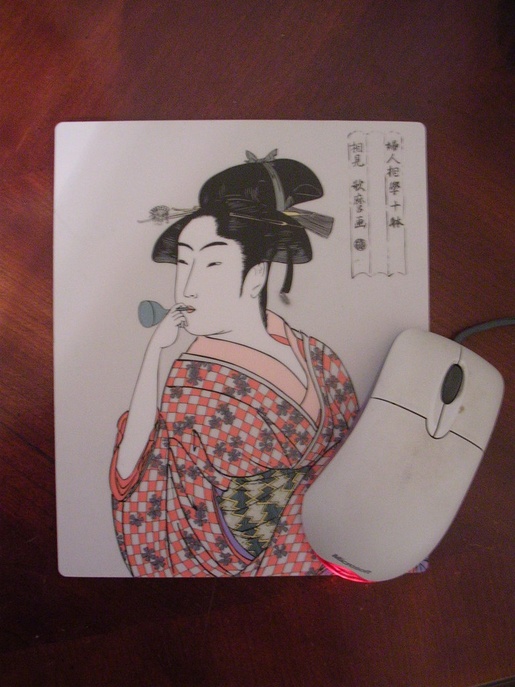
|
||
 Enlarge
Enlarge
|
Licensing | |
During the summer of 2006 I attended the 58th Japan-America Student Conference. This Conference brought together 72 students from all around the United States, Japan and Korea together to discuss contemporary economic, political and social issues. The Conference also provides a diplomatic training space between young Japanese and American scholars. One part of this diplomatic culture between the United States and Japan is the practice of giving gifts. Toward the end of the conference a Japanese girl who had brought a surplus supply of presents decided to give one to me. As customary I did not open the present until much later. She had given me a mouse pad with a traditional Japanese print. When I first admired this present it seemed like a typical gift that anyone Japanese person would give to an American. However, after a year of studying pre-modern Japanese history, art and Japanophila my opinions toward the gift began to vary. While I was reading Timon Screech’s book entitled Sex and the Floating World I came across a picture on page 174 that was the same as my mouse pad. He states that trinkets like popins, the object the woman is blowing on, were for off-work moments when drinking and lovemaking abounded. He continues by deconstructing images such as this one in relation to phallic symbols and how they relate to the floating world. Now, looking at this picture again as an erotic image from the Edo period challenges my original conception of this simple utilitarian object.
Anne Allison’s book entitled Millennial Monsters presents a common theme of commodity fetishism for Japanese goods. Although this object was a gift, many utilitarian items that could be found in many souvenir shops throughout Japan are purchasable due to the high demand from tourists for Japan-like objects. Theoretical concepts such as commodity fetishism made me, as a white American male, to reconsider the reasons why I own Japanese goods. I often think that Edward Said would point and laugh at me calling me an Orientalist for owning a mouse pad with traditional “Asian” art however; coming to a better understanding for my desire to academically and personally collect “Japan” makes me feel less bound by the categorization of a traditional Orientalist.
This work is licensed under a Public Domain
 jfknudson21
—
Última actualización Mar 30 2011 8:01 p.m.
jfknudson21
—
Última actualización Mar 30 2011 8:01 p.m.
Part of these albums

|
Japanophilia mpitelka
mpitelka
|

|


 Journal feed
Journal feed
